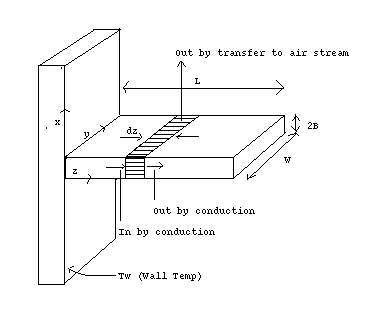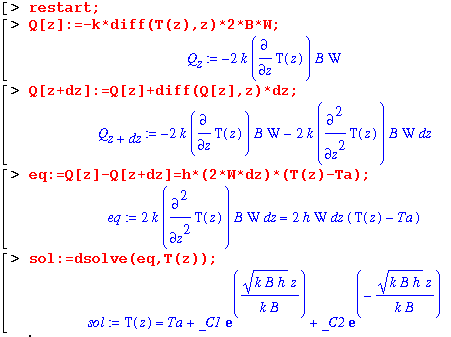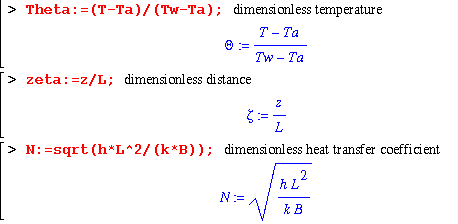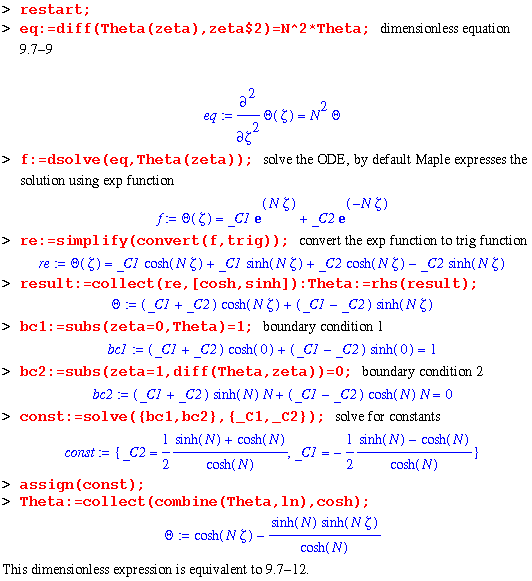Heat Conduction in a Cooling Fin
Section 9.7; Bird, Stewart and Lightfoot
The calculation of the efficiency of a cooling fin is another practical application of heat conduction. The area available for heat transfer between metal walls and poorly conducting fluids, like gases, is increased by cooling fins.

Figure 1
The model in Figure 1 makes the following assumptions:
a) Temperature is a function of z only.
b) Neither the end nor the edges lose heat.
c) q=h(T-Ta) is the heat flux at the surface, where h is the heat transfer coefficient and T=T(z).
A thermal energy balance on a segment dz of the bar proceeded by the insertion of Fourier's law yields the following differential equation and its solution.

Solving this equation directly requires the following boundary conditions:
B.C. 1: at z=0, T=Tw
B.C. 2: at z=L, dT/dz=0
However, the answer is very ugly, and so its evaluation is left to the discretion of the reader. The use of the following dimensionless quatities cleans up the answer significantly.


SAMPLE PROBLEM




